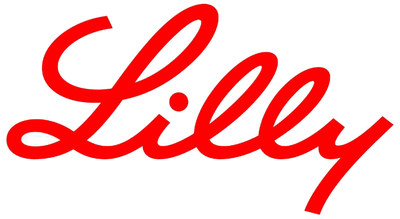Eli Lilly and Company (NYSE: LLY) announced today that it will present new data from Taltz® (ixekizumab) and Olumiant® (baricitinib) at the American College of Rheumatology (ACR)/Association of Rheumatology Professionals (ARP) annual meeting taking place Nov. 8-13, 2019 in Atlanta
|
INDIANAPOLIS, Nov. 8, 2019 /PRNewswire/ -- Eli Lilly and Company (NYSE: LLY) announced today that it will present new data from Taltz® (ixekizumab) and Olumiant® (baricitinib) at the American College of Rheumatology (ACR)/Association of Rheumatology Professionals (ARP) annual meeting taking place Nov. 8-13, 2019 in Atlanta. The presentations will highlight the latest therapeutic data available in chronic rheumatologic conditions including radiographic axial spondyloarthritis, also known as ankylosing spondylitis (AS); psoriatic arthritis (PsA) and rheumatoid arthritis (RA), along with the latest investigative data for non-radiographic axial spondyloarthritis (nr-axSpA) and systemic lupus erythematosus (SLE). "Elevating the standard of care for people living with immune-mediated rheumatic diseases is a core part of our mission at Lilly," said Lotus Mallbris, M.D., Ph.D., vice president of immunology development at Lilly. "The breadth of data we're presenting at this ACR meeting underscores our unwavering commitment to provide cutting edge innovations for the millions of people living with these conditions." At this year's meeting, Lilly will present data from clinical studies of Taltz as a treatment for PsA, AS and as a potential treatment for nr-axSpA. Highlights of the data include late-breaking 52-week results from the SPIRIT-H2H study comparing Taltz vs. Humira® (adalimumab) in patients with active PsA. Full results from the Phase 3 COAST-X trial in nr-axSpA will also be presented. In addition, data being presented on Olumiant reinforce the medicine's promise as a treatment option for adult patients with moderately to severely active RA who have had an inadequate response to one or more TNF antagonist therapies. An integrated, seven-year safety analysis on Olumiant will be presented as well as data on Olumiant's effect on pain associated with RA. Studies, as well as the times and locations of the data sessions, are listed below. Taltz Data Oral Presentations (All times EST) Sunday, November 10, 2:30-4:00 PM
Monday, November 11, 2:30-2:45 PM
Tuesday, November 12, 11:30-11:45 AM (Plenary)
Tuesday, November 12, 4:00-6:00 PM
Poster Presentations Sunday, November 10, 9:00-11:00 AM
Monday, November 11, 9:00-11:00 AM
Tuesday, November 12, 9:00-11:00 AM
Olumiant Data Oral Presentations Sunday, November 10, 2:30-4:00 PM
Monday, November 11, 4:30-6:00 PM
Poster Presentations Sunday, November 10, 9:00-11:00 AM
Monday, November 11, 9:00-11:00 AM
Tuesday, November 12, 9:00-11:00 AM
INDICATIONS AND USAGE FOR TALTZ IMPORTANT SAFETY INFORMATION FOR TALTZ CONTRAINDICATIONS WARNINGS AND PRECAUTIONS Pre-Treatment Evaluation for Tuberculosis Hypersensitivity Inflammatory Bowel Disease Immunizations ADVERSE REACTIONS Please see accompanying Prescribing Information and Medication Guide. Please see Instructions for Use included with the device. IX HCP ISI 23AUG2019 Indication and Usage for OLUMIANT (baricitinib) tablets (in the United States) for RA patients OLUMIANT® (baricitinib) 2 mg is indicated for the treatment of adult patients with moderately to severely active rheumatoid arthritis who have had an inadequate response to one or more tumor necrosis factor (TNF) antagonist therapies. Limitation of Use: Use of OLUMIANT in combination with other JAK inhibitors, biologic disease-modifying antirheumatic drugs (DMARDs), or with potent immunosuppressants such as azathioprine and cyclosporine is not recommended. IMPORTANT SAFETY INFORMATION FOR OLUMIANT (baricitinib) TABLETS WARNING: SERIOUS INFECTIONS, MALIGNANCY, AND THROMBOSIS SERIOUS INFECTIONS: Patients treated with Olumiant are at risk for developing serious infections that may lead to hospitalization or death. Most patients who developed these infections were taking concomitant immunosuppressants such as methotrexate or corticosteroids. If a serious infection develops, interrupt Olumiant until the infection is controlled. Reported infections include:
Carefully consider the risks and benefits of Olumiant prior to initiating therapy in patients with chronic or recurrent infection. Closely monitor patients for the development of signs and symptoms of infection during and after treatment with Olumiant including the possible development of TB in patients who tested negative for latent TB infection prior to initiating therapy. MALIGNANCIES: Lymphoma and other malignancies have been observed in patients treated with Olumiant. THROMBOSIS: Thrombosis, including deep venous thrombosis (DVT) and pulmonary embolism (PE), has been observed at an increased incidence in patients treated with Olumiant compared to placebo. In addition, there were cases of arterial thrombosis. Many of these adverse events were serious and some resulted in death. Patients with symptoms of thrombosis should be promptly evaluated. WARNINGS AND PRECAUTIONS SERIOUS INFECTIONS: The most common serious infections reported with Olumiant included pneumonia, herpes zoster and urinary tract infection. Among opportunistic infections, tuberculosis, multidermatomal herpes zoster, esophageal candidiasis, pneumocystosis, acute histoplasmosis, cryptococcosis, cytomegalovirus and BK virus were reported with Olumiant. Some patients have presented with disseminated rather than local disease and were often taking concomitant immunosuppressants such as methotrexate or corticosteroids. Avoid Olumiant in patients with an active, serious infection, including localized infections. Consider the risks and benefits of treatment prior to initiating Olumiant in patients:
Closely monitor patients for infections during and after Olumiant treatment. Interrupt Olumiant if a patient develops a serious infection, an opportunistic infection, or sepsis. Do not resume Olumiant until the infection is controlled. Tuberculosis – Before initiating Olumiant evaluate and test patients for latent or active infection and treat patients with latent TB with standard antimycobacterial therapy. Olumiant should not be given to patients with active TB. Consider anti-TB therapy prior to initiating Olumiant in patients with a history of latent or active TB in whom an adequate course of treatment cannot be confirmed, and for patients with a negative test for latent TB but who have risk factors for TB infection. Monitor patients for TB during Olumiant treatment. Viral Reactivation – Viral reactivation, including cases of herpes virus reactivation (e.g., herpes zoster), were reported in clinical studies with Olumiant. If a patient develops herpes zoster, interrupt Olumiant treatment until the episode resolves. The impact of Olumiant on chronic viral hepatitis reactivation is unknown. Screen for viral hepatitis in accordance with clinical guidelines before initiating Olumiant. MALIGNANCY AND LYMPHOPROLIFERATIVE DISORDERS: Malignancies were observed in Olumiant clinical studies. Consider the risks and benefits of Olumiant prior to initiating therapy in patients with a known malignancy other than a successfully treated non-melanoma skin cancer (NMSC) or when considering continuing Olumiant in patients who develop a malignancy. NMSCs were reported in patients treated with Olumiant. Periodic skin examination is recommended for patients who are at increased risk for skin cancer. THROMBOSIS: Thrombosis, including DVT and PE, has been observed at an increased incidence in Olumiant-treated patients compared to placebo. In addition, arterial thrombosis events in the extremities have been reported in clinical studies with Olumiant. Many of these adverse events were serious and some resulted in death. There was no clear relationship between platelet count elevations and thrombotic events. Use Olumiant with caution in patients who may be at increased risk of thrombosis. If clinical features of DVT/PE or arterial thrombosis occur, evaluate patients promptly and treat appropriately. GASTROINTESTINAL PERFORATIONS: Gastrointestinal perforations have been reported in Olumiant clinical studies, although the role of JAK inhibition in these events is not known. Use Olumiant with caution in patients who may be at increased risk for gastrointestinal perforation (e.g., patients with a history of diverticulitis). Promptly evaluate patients who present with new onset abdominal symptoms for early identification of gastrointestinal perforation. LABORATORY ABNORMALITIES: Neutropenia – Olumiant treatment was associated with an increased incidence of neutropenia (absolute neutrophil count [ANC] <1000 cells/mm3) compared to placebo. Avoid initiation or interrupt Olumiant treatment in patients with an ANC <1000 cells/mm3. Evaluate at baseline and thereafter according to routine patient management. Lymphopenia – Absolute lymphocyte count (ALC) <500 cells/mm3 were reported in Olumiant clinical trials. Lymphocyte counts less than the lower limit of normal were associated with infection in patients treated with Olumiant, but not placebo. Avoid initiation or interrupt Olumiant treatment in patients with an ALC <500 cells/mm3. Evaluate at baseline and thereafter according to routine patient management. Anemia – Decreases in hemoglobin levels to <8 g/dL were reported in Olumiant clinical trials. Avoid initiation or interrupt Olumiant treatment in patients with hemoglobin <8 g/dL. Evaluate at baseline and thereafter according to routine patient management. Liver Enzyme Elevations – Olumiant treatment was associated with increased incidence of liver enzyme elevation compared to placebo. Increases to ≥5x and ≥10x upper limit of normal were observed for both ALT and AST in patients in Olumiant clinical trials. Evaluate at baseline and thereafter according to routine patient management. Promptly investigate the cause of liver enzyme elevation to identify potential cases of drug-induced liver injury. If increases in ALT or AST are observed and drug-induced liver injury is suspected, interrupt Olumiant until this diagnosis is excluded. Lipid Elevations – Treatment with Olumiant was associated with increases in lipid parameters, including total cholesterol, low-density lipoprotein cholesterol and high-density lipoprotein cholesterol. Assess lipid parameters approximately 12 weeks following Olumiant initiation. Manage patients according to clinical guidelines for the management of hyperlipidemia. VACCINATIONS: Avoid use of live vaccines with Olumiant. Update immunizations in agreement with current immunization guidelines prior to initiating Olumiant therapy. ADVERSE REACTIONS USE IN SPECIFIC POPULATIONS PREGNANCY AND LACTATION: No information is available to support the use of Olumiant in pregnancy or lactation. Advise women not to breastfeed during treatment with Olumiant. HEPATIC AND RENAL IMPAIRMENT: Olumiant is not recommended in patients with severe hepatic impairment or in patients with severe renal impairment. Please click to access full Prescribing Information, including Boxed Warning about Serious infections, Malignancies, and Thrombosis, and Medication Guide. BA HCP ISI 11OCT2019 About Taltz® About OLUMIANT® About Lilly in Rheumatology About Eli Lilly and Company This press release contains forward-looking statements (as that term is defined in the Private Securities Litigation Reform Act of 1995) about Taltz (ixekizumab) as a treatment for moderate-to-severe plaque psoriasis, active psoriatic arthritis and ankylosing spondylitis, and as a potential treatment for non-radiographic axial spondyloarthritis; and Olumiant (baricitinib) as a treatment for moderate-to-severe rheumatoid arthritis and as a potential treatment for systemic lupus erythematosus, and reflects Lilly's current belief. As with any pharmaceutical product, there are substantial risks and uncertainties in the process of development and commercialization. Among other things, there can be no guarantee that future study results will be consistent with the results to date, that Taltz or Olumiant will receive additional regulatory approvals, or be commercially successful. For further discussion of these and other risks and uncertainties, see Lilly's most recent Form 10-K and Form 10-Q filings with the United States Securities and Exchange Commission. Except as required by law, Lilly undertake no duty to update forward-looking statements to reflect events after the date of this release. 1 Taltz Prescribing Information, 2019.
SOURCE Eli Lilly and Company |
||||||
Company Codes: NYSE:LLY |





